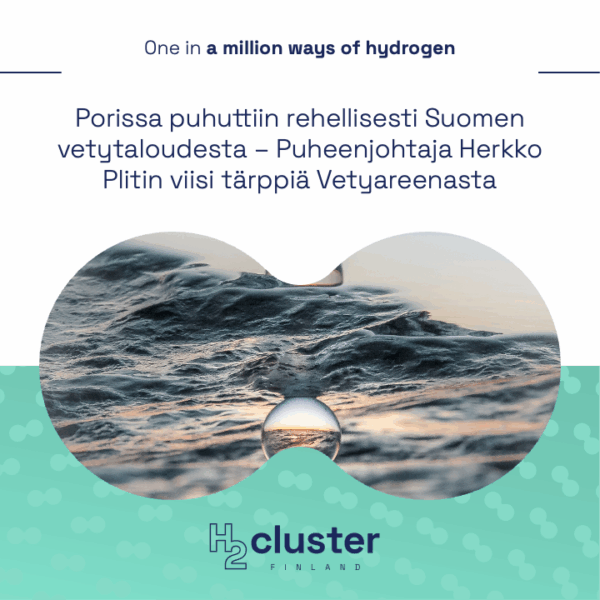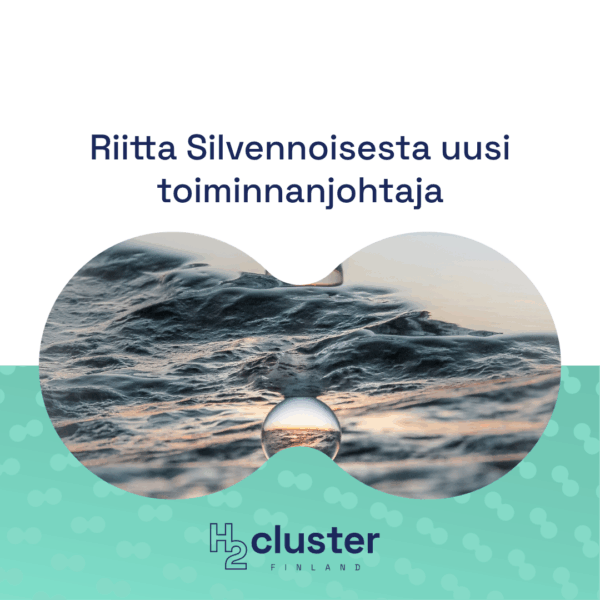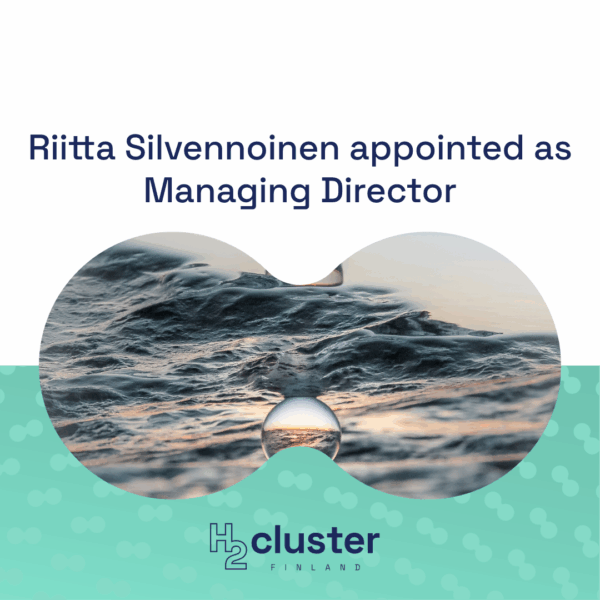Public funding – the enabler and accelerator of hydrogen projects
Hydrogen projects are often enabled or, at least, accelerated by public funding. When lacking time or experience in funding, grant applicants may turn to consultants, such as Spinverse, for support in the application process.
Hydrogen project article series introduces the projects and perspectives of H2Cluster Finland member companies.
Creating a successful hydrogen economy requires significant investment in production, storage, use and transportion of hydrogen.
“The whole value chain is attractive to investors, as the demand for green hydrogen will be huge. Public funding is, however, essential in order to speed up the change. Fortunately, both regional and international funding is readily available,” says Timo Ropponen, the Director of the Manufacturing team at Spinverse.
In Finland, for example, hydrogen projects are typically supported by the Ministry of Economic Affairs and Employment or Business Finland, the government organization for innovation funding.
EU funding available for investment projects
Ropponen expects hydrogen businesses to receive more and more funding from the EU in the coming years. He takes the EU Innovation Fund as an example. It is one of the world’s largest funding programmes for the demonstration of innovative low-carbon technologies. In its first two years, 2021 and 2022, it contributed to projects altogether with €3 billion, while this year’s budget alone is roughly the same.
So far, the EU Innovation Fund has granted €106 million to hydrogen projects, which are located in Finland, Poland, Italy and Spain. Ropponen expects the share of hydrogen funding to rise sharply, but not without tough competition.
“When applying for a grant from the Innovation Fund, your typical production plans and business plans are not enough, not even close. The application process requires time and experience, and without experience even more time. This is where we like to help.”
Ropponen points out that being granted public funding adds new tasks to the investment project. Most public funders require regular reporting and public knowledge sharing as well. This is what Spinverse often continues to work with after having helped companies in the application process.
Cooperation – the key to innovation and value chains
Despite all the requirements that need to be met, funding an investment project may seem quite simple when compared to funding a research and development project. EU funding programmes for research, development and innovation, or RDI, typically expect the main applicant to cooperate with several partners across Europe.
“One of the largest RDI project we have coordinated involved over 50 partners and some 25 million euros in grants with a total budget over 50 million euros. This was in the field of microelectronics. I’m sure broad cooperation will benefit the hydrogen economy as well.”
Ropponen sees cooperation as the key not only to innovation but also to creating value chains.
“When building a whole hydrogen value chain from scratch, ecosystems of companies are needed. Some funding instruments are specialised in this.”
Business Finland, for example, funds global companies to lead ecosystems that consist of companies and other players. The Clean Hydrogen Partnership, in turn, supports European Hydrogen Valleys, which are regional ecosystems that link hydrogen production, transportation, and various end uses such as mobility or industrial feedstock.
“A regional ecosystem seems to be a good starting point for most hydrogen projects.”



